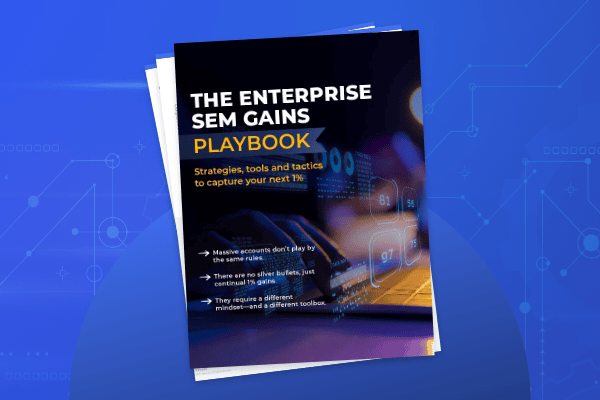Summary
Retail media didn’t just grow in Q1—it matured. Spend rose 21% year-over-year despite headwinds like inflation and new tariffs, signaling that brands aren’t just experimenting anymore—they’re committing. Emerging RMNs are gaining traction, while incumbents like Amazon and Walmart continue to evolve. And the fundamentals? Still strong. CTR, CPC, ROAS all held or improved, pointing to sharper targeting and more efficient spend. Full-funnel strategies are becoming the norm, with categories like grocery and beauty quietly scaling in ways that would’ve seemed ambitious a year ago. The bottom line: retail media is now a core performance channel, not a pilot.
Coming off a record-setting Q4, Q1 could’ve easily been a cooldown. Instead, it marked a shift: from acceleration to traction. Although Q1 started off more stable, new mid-quarter factors—like recent tariffs—caused sudden market shifts that impacted consumer confidence. Marketers have had to swiftly adjust strategies, though deeper impacts remain to be seen.
Additionally, inflation likely influenced these metrics significantly, particularly CPCs and spend allocation, as marketers adjusted their strategies and creative accordingly. This impact will be significant to monitor as inflation persists, and we will almost certainly see the impact of the tariffs in our next quarterly trends report analysis of Q2.
Regardless of the various market narratives, the data from Q1 2025 is clear: retail media spend is still growing—up 21% year-over-year (YoY)—but the real story is where that investment is landing. Emerging RMNs are earning a larger share of attention, not as a fluke, but as a sign of a more mature and competitive landscape. CPCs are holding steady, CTRs are improving, and brands are dialing in campaigns that prioritize engagement and efficiency over volume alone. With the evolution from retail media to broader commerce media, marketers may soon rely more on generative AI solutions to manage increasing complexity, though that’s a conversation for another day.
Category performance is also diverging in sharper ways. Some, like beauty and grocery, are scaling efficiently with strong ROI to match. Others are feeling the cost pressure. Across the board, though, retail media is showing it can deliver consistent, measurable results—even in a softer seasonal quarter.
What’s emerging is a channel that’s not just growing up, but growing smarter.
Key Takeaways from Q1 2025
- Retail media spend is holding steady, and performance is quietly improving
- Retail media continues to outperform on ROAS, proving its place in long-term planning
- The market is expanding beyond Amazon as other RMNs deliver on cost and scale
- Full-funnel strategies gain momentum with increased accessibility
- Coming off a huge Q4 holiday season, certain categories are scaling efficiently in the new year
Retail media spending shows signs of stability and maturity
By the Numbers
- Retail media spend rose +21% YoY, with clicks up +20% and impressions +14%
- CTR improved +15% QoQ and +5% YoY—even with seasonal drop-offs post-holiday
- CPCs remained stable at +1% YoY, showing minimal fluctuation despite auction shifts.
The Big Picture
In a landscape where economic volatility persists, the KPI stability seen in Q1 is noteworthy. It remains to be seen if this stability holds into Q2, and marketers will need to stay agile, ready to adapt strategies should conditions shift again.
According to the 2025 State of Retail Media report, 68% of advertisers expect their retail media budgets to increase this year. That momentum reflects not just confidence in performance, but a shift in how brands treat the channel, moving from rigid allocations to more responsive, performance-driven strategies that flex with seasonal demand and retailer collaboration.
For marketers, that means retail media is becoming a more dependable line item. The core signals—CTR and CPC—are leveling out, which means you can forecast with more confidence and optimize based on clean performance reads. It’s no longer about chasing spikes. It’s about sustaining results.
Action Plan
- Recalibrate pacing models using Q1 seasonality. Knowing when impressions soften (without hurting performance) helps you spread budget more effectively across the year.
- Stable CPCs offer a window to refine planning assumptions. Now is the time to try new things without being penalized by rising click costs.
- Use CTR trends as a core indicator of campaign health. When spend dips but CTR rises, that’s a sign your targeting and creative are working. It’s not the only metric that matters, but it’s still a good metric in the digital marketer’s toolbox.
Retail media continues to deliver strong, consistent results
By the Numbers
- ROAS remained at 6.1x for the fifth consecutive quarter
- Clicks outpaced impressions by +6%, a signal of sharper targeting/better ad resonance
- Average CPC across platforms held steady at $1.06 and a welcomed slight drop from the Q3 and Q4 end-of-year shopping periods.
The Big Picture
There aren’t many channels delivering this kind of consistency even with Q1’s seasonal slowdown. While ROAS remains a valuable indicator of overall channel health, marketers are increasingly using additional KPIs, such as market share, profit contribution, and topline sales, to gauge true success. For this quarterly trends analysis, however, ROAS still provides a useful aggregate view.
And for the retail media marketers in our sample, ROAS stayed rock-solid. Click efficiency improved. CPCs stayed in check. And spend held strong compared to last year.
In a media environment increasingly challenged by signal loss and attribution gaps, retail media is proving itself as a stable, performance-first channel. That’s what makes it foundational. You can build around it, and know what you’re going to get.
Action Plan
- Keep up the good work via a test-and-learn approach. Results may vary, but we consistently see strong performance when brands embrace advanced measurement like incrementality to stay agile.
- Stable CPCs mean you can scale without second-guessing budget increases. Use that to your advantage when planning larger campaigns.
- Follow the money! Lead your go-to-market strategy with retail media and evolve toward a broader commerce media strategy. Integrating paid search and social media can amplify your reach and drive high-intent traffic to your product detail pages (PDPs).
Walmart and emerging RMNs are gaining ground
By the Numbers
- Walmart saw YoY spend climb +38%, with click volume up +36%
- RMNs beyond Amazon & Walmart saw even sharper click growth at +45%, and spend rose +29% YoY
- Amazon’s growth remained solid, with clicks up +7% and spend +15% YoY
- CPCs dropped -11% YoY for “Other” RMNs, and -10% for Walmart’s Sponsored Brands
The Big Picture
This is what market expansion looks like. As retail media matures, we’re seeing exactly what you’d expect from a fast-growing channel: dollars spreading out, more platforms proving their value, and new networks carving out meaningful share.
Amazon remains the largest player—and a critical partner—but others are gaining ground fast. Walmart, in particular, is showing strong efficiency gains, with CPCs dropping as engagement rises. Meanwhile, a broader group of RMNs is proving they can deliver scale, often at a lower cost. For brands, that opens up new paths to growth—and more levers to pull when performance varies by platform.
Action Plan
- Actively test new RMNs where the audience and category fit align. Click growth and falling CPCs are strong entry signals. Test programs on new RMNs.
- Revisit Walmart’s media mix in your strategy. Sponsored Brands performance is up, CPCs are down, and the channel is moving beyond its early learning curve.
- Shift from static budget splits to dynamic reallocation. When costs and performance diverge across platforms, you need agility to capture upside without overpaying. Find the value before your rivals.
Full-funnel strategies gain momentum with increased accessibility
By the Numbers
- Amazon DSP took 20.7% of total Amazon Advertising spend—the highest share in five quarters
- Sponsored Brands spend grew +10% QoQ across Amazon and Walmart
- Sponsored Products continued to dominate in volume, with +12% YoY growth
The Big Picture
Retail media strategies are getting more sophisticated—and more complete. What started as a bottom-funnel performance channel is now spanning the full customer journey, from awareness to conversion. DSP growth signals a push upstream, while Sponsored Brands continue to deliver mid-funnel engagement at scale.
This isn’t just about brand-building for its own sake. The data shows that full-funnel strategies are delivering results, especially when campaigns are sequenced to guide the shopper through decision points. That integration—top to bottom—is where efficiency really starts to stack.
Action Plan
- Build targeting strategies that connect DSP and Sponsored Products. Funnel cohesion drives stronger lift than isolated tactics.
- Run tests on upper-funnel channels and measure incrementality. DSP and Sponsored Brands are worth the spend, but need clarity on their downstream impact.
- Full-funnel success depends not just on sequencing, but on aligning messaging. Be sure you understand the unique shopper behavior on each retail platform, especially at the awareness stage.
High-performing categories are scaling with efficiency
By the Numbers
- Beauty & Personal Care spend rose +26% YoY, while CPCs dropped -10%
- Food & Grocery spend jumped +31% YoY, with strong engagement and competitive CPCs
- Health had the highest CPC at $1.80, but only grew by +2% in spend
- Apparel and Hobbies & Leisure showed stable CPCs but slower growth
The Big Picture
Not all verticals are experiencing the same kind of growth—or efficiency. Grocery and Beauty, in particular, stood out this quarter for achieving higher spend alongside lower CPCs. For Grocery, this likely reflects the continued shift of consumer activity online—especially in categories that were historically in-store only. As more assortment becomes digitally advertised and fulfillment expands across BOPIS, curbside, and last-mile delivery, the tailwinds are clear. Beauty’s trajectory is more surprising; it’s unusual to see spend climb without upward pressure on CPCs. It’s worth considering whether some of that signal could be blending with adjacent categories like Health, depending on retailer classification..
In contrast, Health is hitting some friction. CPCs are up, but spend is flat—suggesting saturation, competition, or creative fatigue. Apparel and other lifestyle categories are staying steady, but not breaking out. These gaps matter when you’re allocating budget. You want to double down where cost and performance align—and tread carefully where returns are getting squeezed.
Action Plan
- Prioritize investment in categories showing cost-efficient scale. Beauty and Grocery are the current leaders—allocate accordingly.
- If you’re in a high-CPC category like Health, look for ways to tighten targeting or rotate creative to maintain efficiency.
- Use automated bidding to preserve performance in rising-cost environments. It’s hard to manage manually when CPCs spike unevenly.
Retail Media’s Next Phase: Smarter, Sharper, Steadier
Even in a seasonally softer quarter, retail media held its ground. CPCs remained stable. ROAS stayed consistent. Click growth outpaced impressions, signaling sharper targeting and better creative performance. But beyond the metrics, what stood out was the strategic evolution: spend is being distributed more intentionally, diversified across platforms, and aligned with full-funnel goals.
The shift is being driven, in part, by how consumers actually shop. This shift reflects the rise of the omnishopper—consumers navigating both online and offline touchpoints throughout their journey. Retailers are aiming to become discovery hubs rather than just endpoints. Meanwhile, emerging tools like generative AI agents are beginning to reshape how consumers research and consider products—adding new complexity to the path to purchase.
The days of retail media as a pure performance play are fading. That said, many brands still anchor retail media in performance. As CPMs rise—especially on upper-funnel formats—some marketers remain skeptical, comparing results to channels like CTV or social that offer comparable reach without tying spend to specific retailers. This tension underscores the importance of proving value across the funnel.
The lesson for marketers isn’t just that retail media works—it’s that it’s increasingly reliable, nuanced, and full of levers to pull. There’s now room to think bigger: to plan across quarters, balance scale with control, and build durable performance engines that flex with the market.







